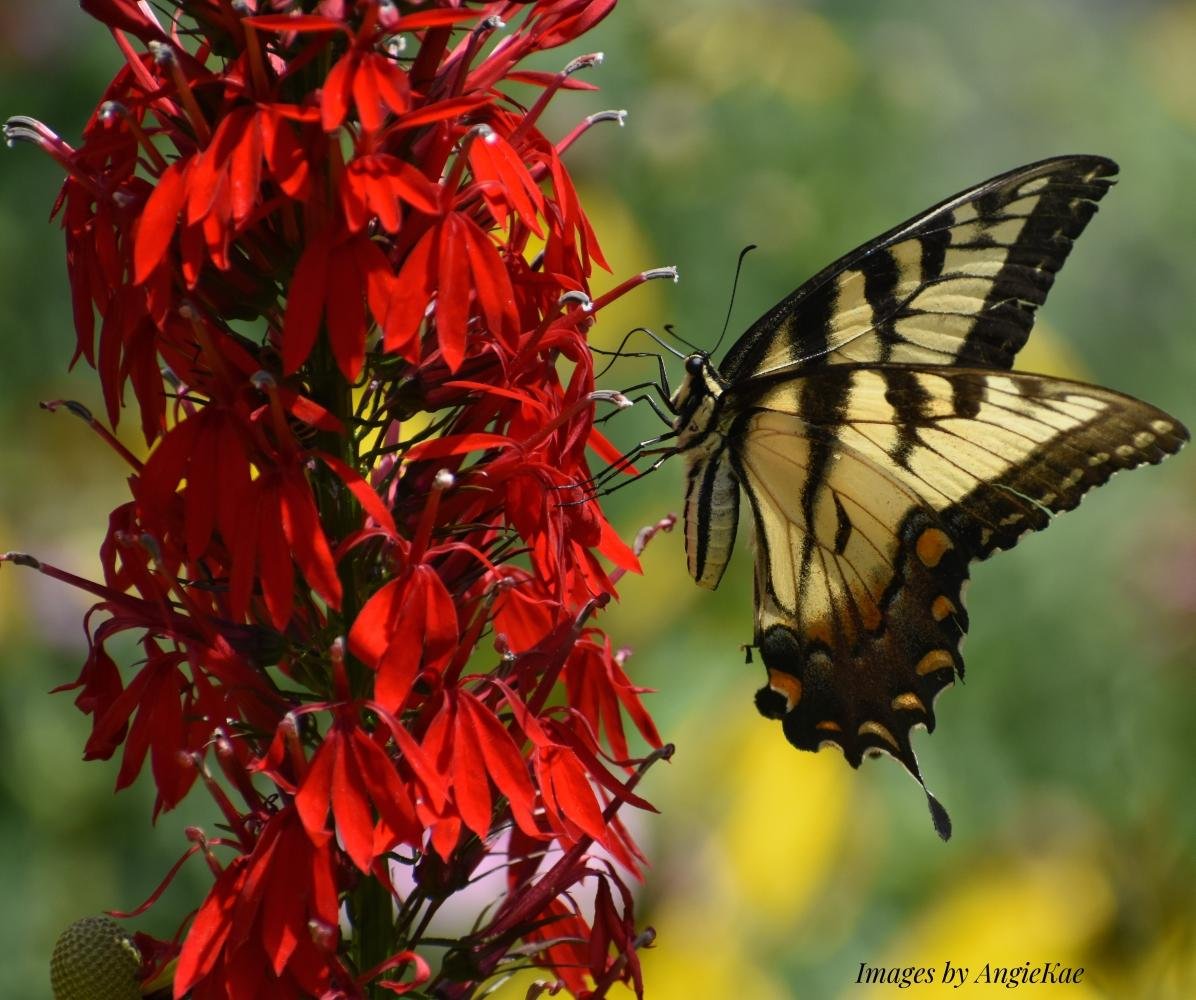 Image 1 of 8
Image 1 of 8

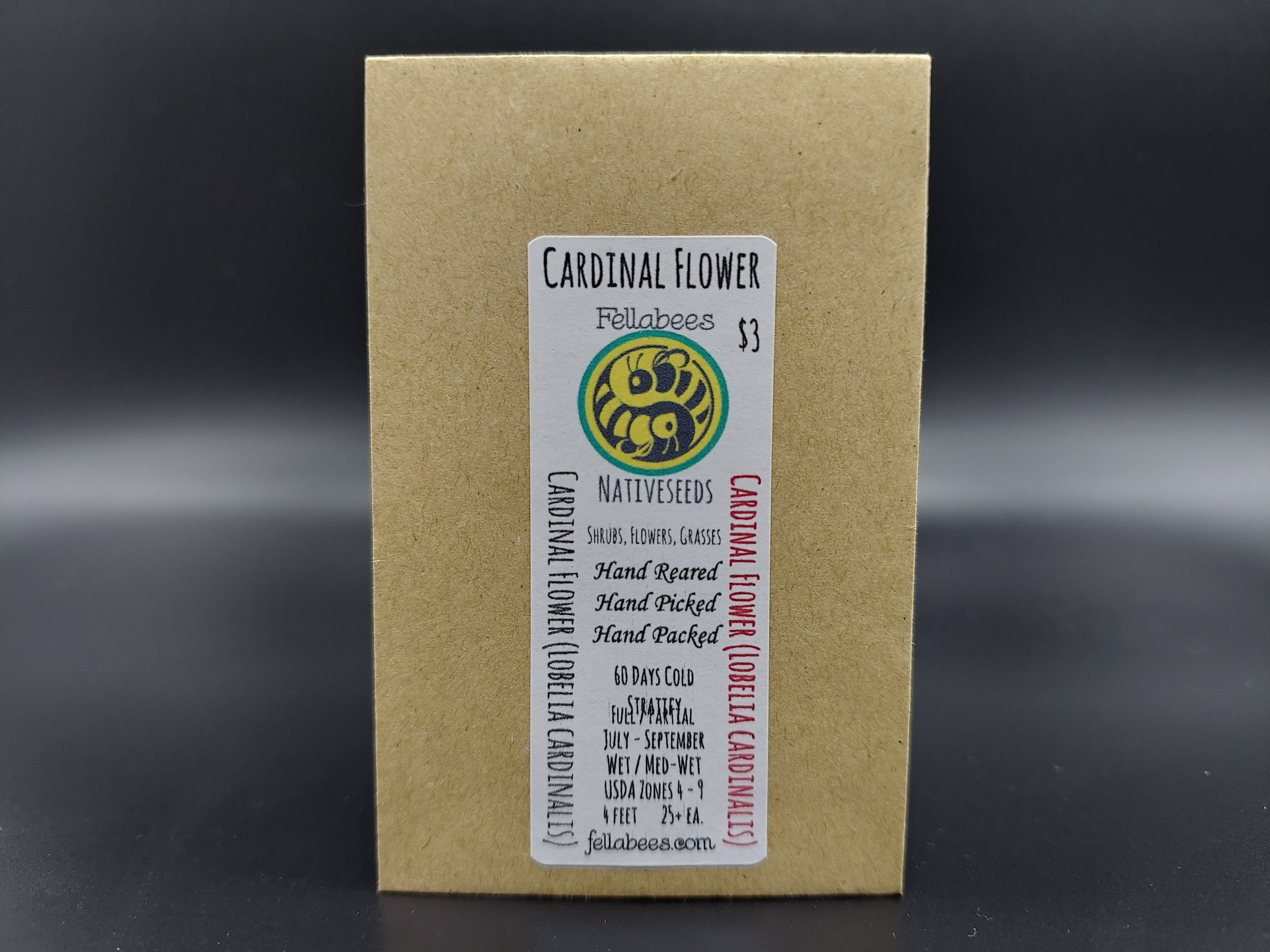 Image 2 of 8
Image 2 of 8

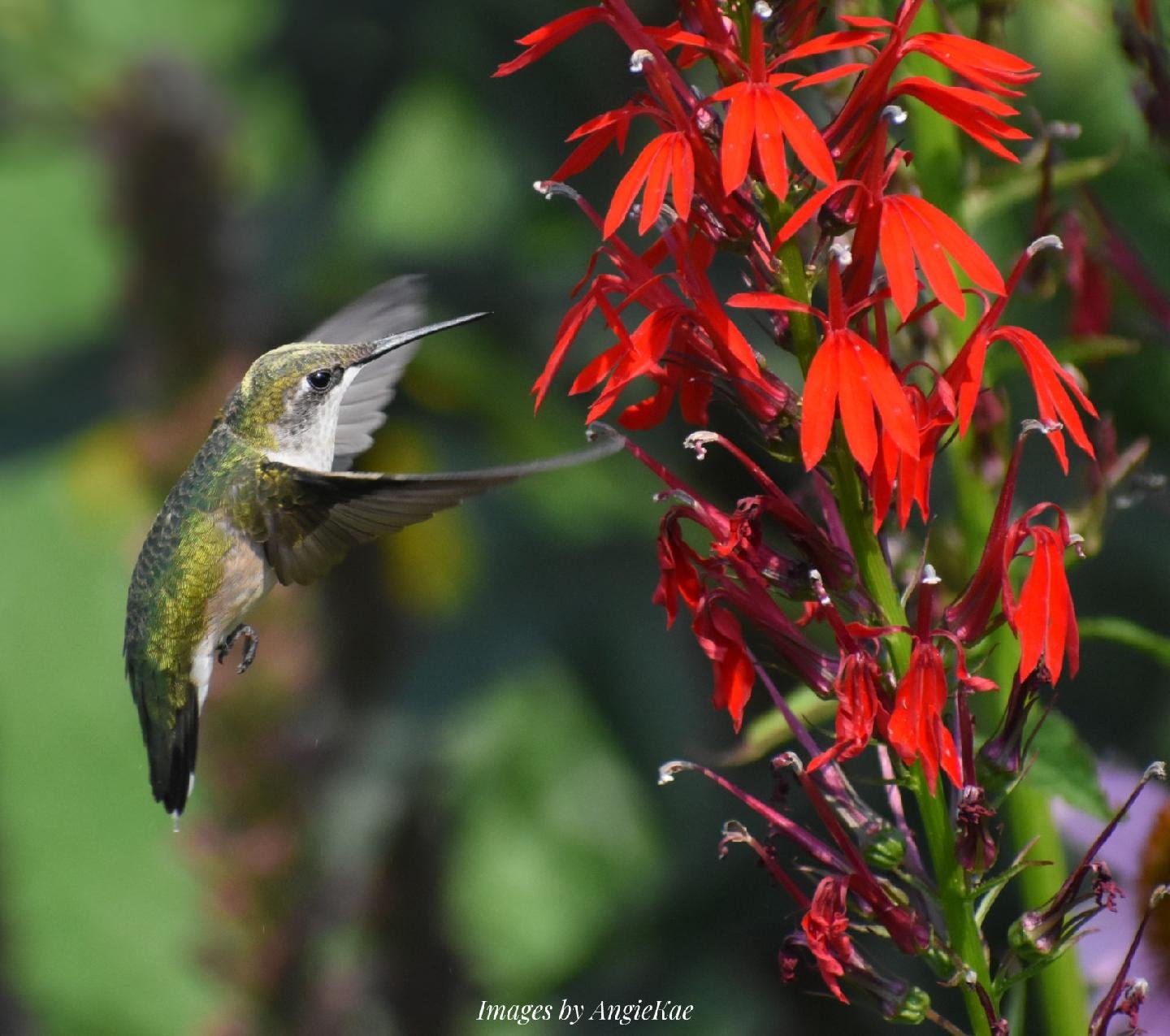 Image 3 of 8
Image 3 of 8

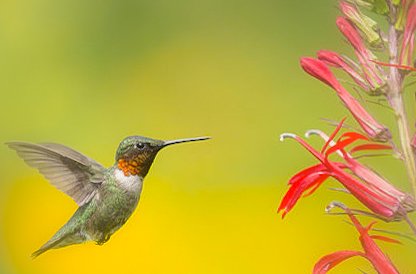 Image 4 of 8
Image 4 of 8

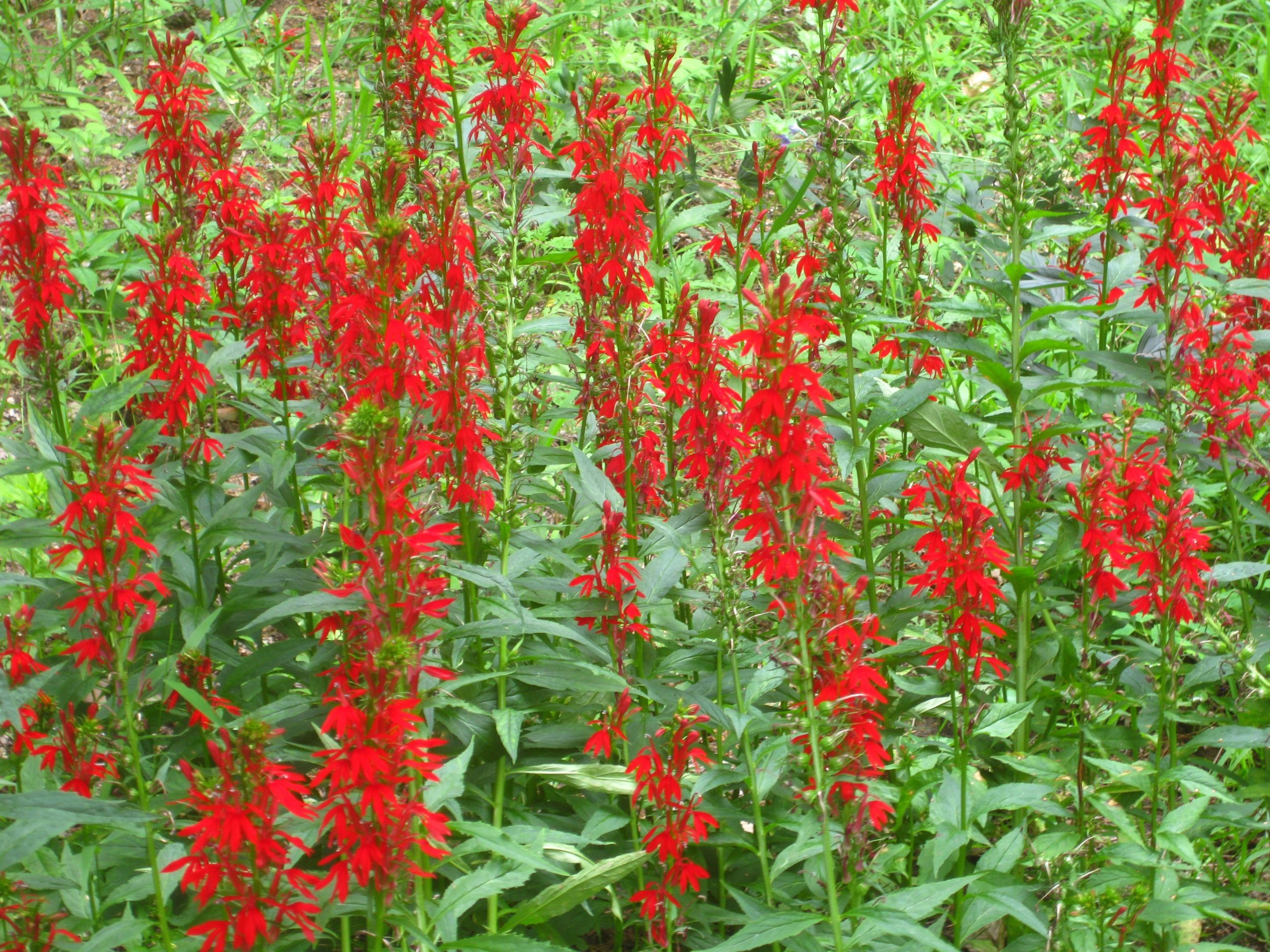 Image 5 of 8
Image 5 of 8

 Image 6 of 8
Image 6 of 8

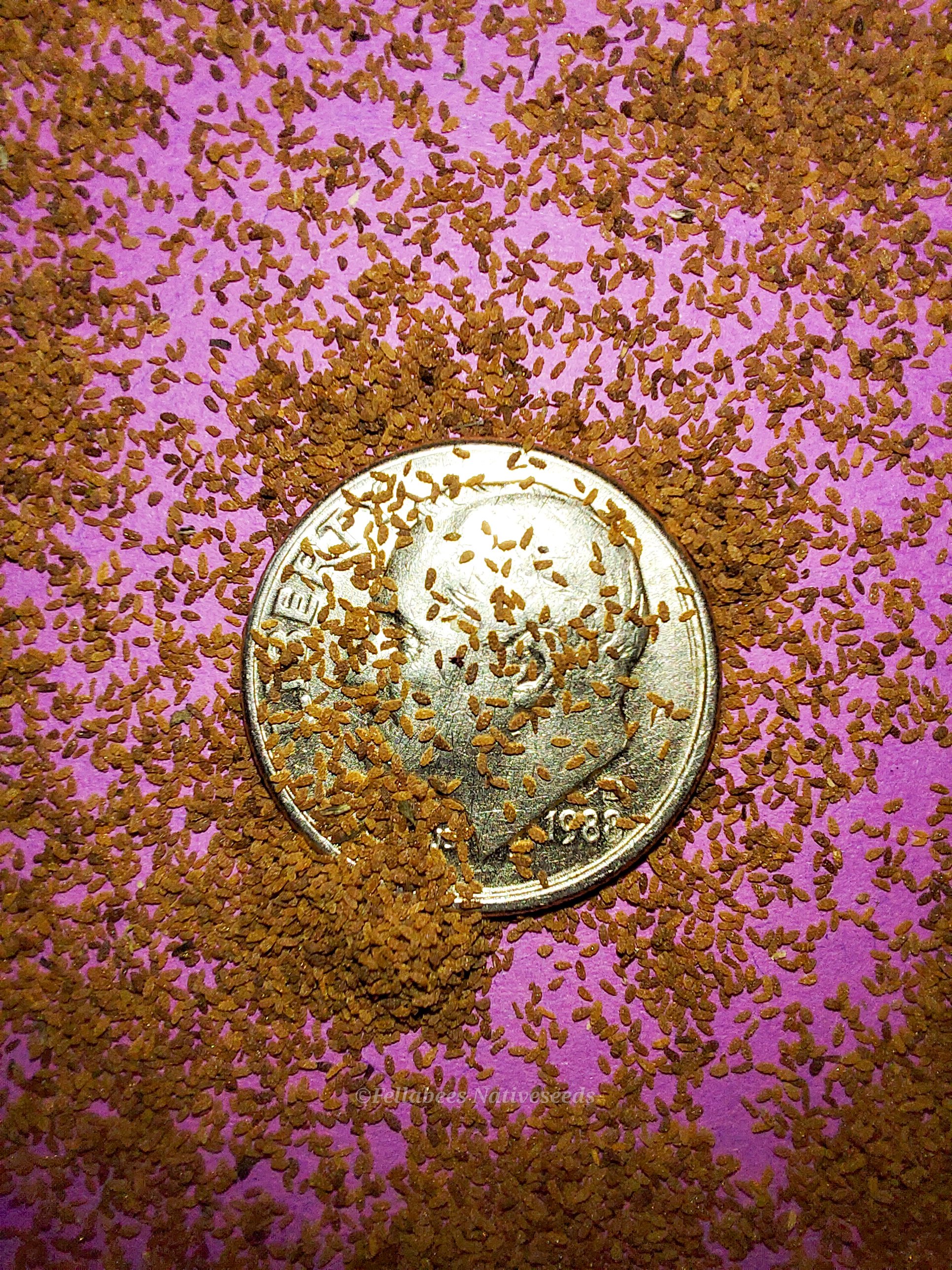 Image 7 of 8
Image 7 of 8

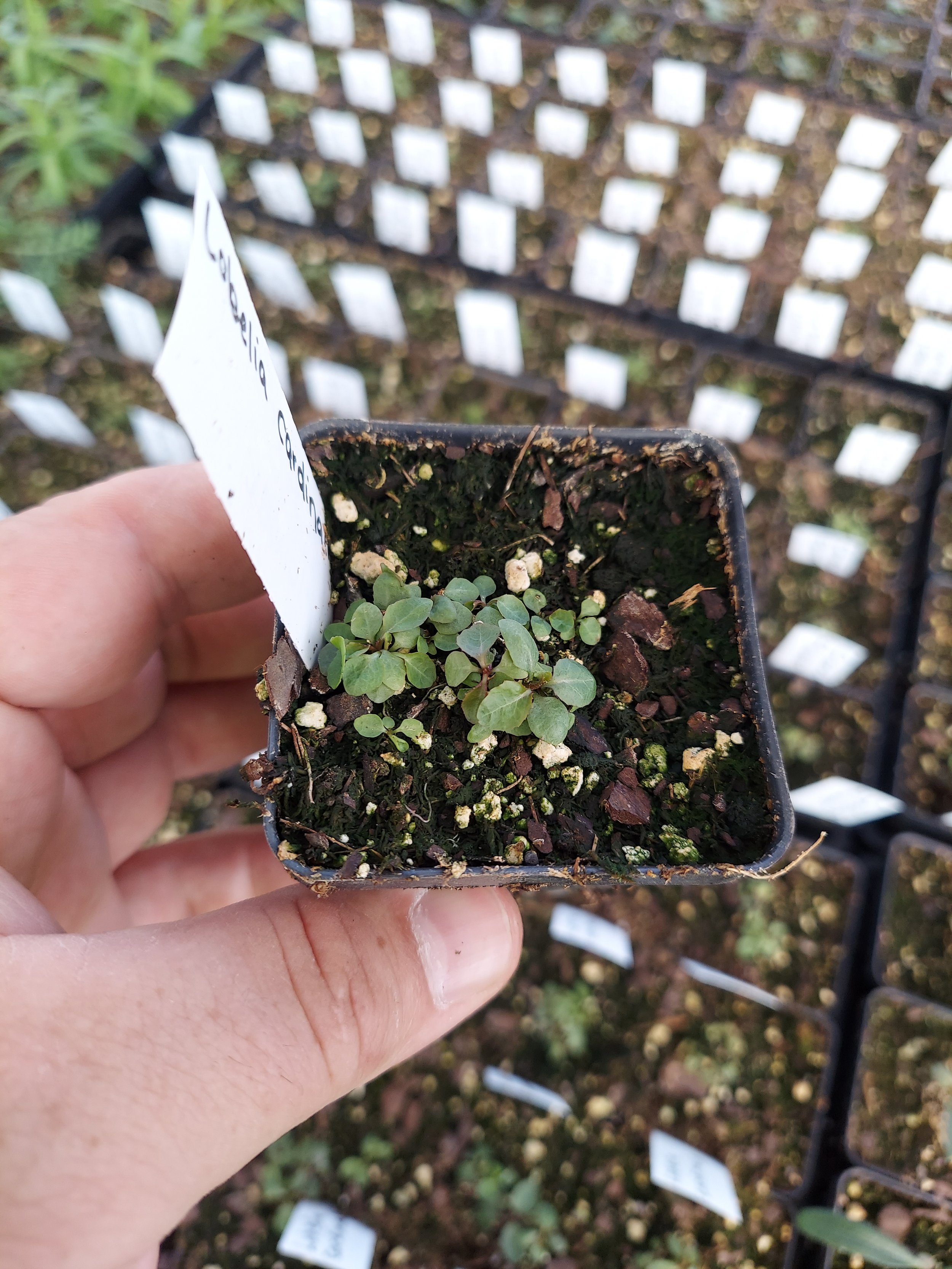 Image 8 of 8
Image 8 of 8









Cardinal Flower (Lobelia cardinalis)
Cardinal Flower (Lobelia cardinalis)
Cardinal Flower (Lobelia cardinalis) is a species of flowering plant in the bellflower family, Campanulaceae. It is native to the Americas, from southeastern Canada south through the eastern and southwestern United States, Mexico and Central America to northern Colombia.
It is a perennial herbaceous plant that grows up to about 4 feet tall and is found in wet places, streambanks, and swamps. The leaves are up to 8 inches long and 2 inches broad, lanceolate to oval, with a toothed margin. The flowers are usually vibrant red, deeply five-lobed, up to 1½ inches across; they are produced in an erect raceme up to 28 inches tall during the summer to fall. Forms with white and pink flowers are also known.
Lobelia cardinalis is related to two other Lobelia species in to the Eastern United States, Indian Tobacco (Lobelia inflate) and Great Blue Lobelia (Lobelia siphilitica); all display the characteristic "lip" petal near the opening of the flower and the "milky" liquid the plant excretes. L. siphilitica has blue flowers and is primarily pollinated by bees, whereas L. cardinalis is red and is primarily pollinated by the Ruby-throated Hummingbird (Archilochus colubris).
This plant is easily propagated by seed and dividing out the young plants which form around the older mature plants each year.
Although the plant is generally considered a perennial, they may be short lived. They love moist soils in partial shade.
Historical Indigenous use:
The Zuni people use this plant as an ingredient of "schumaakwe cakes" and used it externally for rheumatism and swelling. The Penobscot people smoked the dried leaves as a substitute for tobacco. It may also have been chewed.
Plant Details
USDA Zones: 4-9
Germination Needs: 60 Day Cold Stratification, Seed is very small and likes soil contact and a view of the light to germinate. Surface sow and do not cover with more than a dusting if any soil. Keep moist until germination but not soaking, if growing in trays water from the bottom only.
Life Cycle: Perennial (Short-lived)
Sun Exposure: Full to Partial
Soil Moisture: Wet, Medium-Wet
Plant Spacing: ½ - 1½ feet
Height: 4 feet
Bloom Time: July, August, September
Bloom Color: Red
Advantages
Pollinator Favorite: butterflies, moths, bees, wasps, beetles
Bird Favorite: seeds, insects, fruit, nectar, nesting, perchs.
Deer Resistant: Yes
Excellent in the home landscape!
.
.
Packet quantities:
We pride ourselves on ethical, hands on, ecological management, using no mechanical or chemical methods whatsoever.
All of our native seed is hand reared, hand picked, and hand packed from native prairies under our exclusive management, never breaking chain of custody from the field until it is sent to you. Each packet is hand prepared for shipment by us, directly.
Small seed species will contain greater than 20-25 seed
Large seed species will contain greater than 10-15 seed
It is our mission to spread the wealth of native plant and pollinator ecological sustainability, and educate back yard gardeners as well as corporate and government entities in how to germinate, grow, and benefit from native synergies.
Thank you for your support, it is because of you, that we can grow together to do, what we do.🐛🦋🐝🐞🌾🌱🌼🧡
Cardinal Flower (Lobelia cardinalis)
Cardinal Flower (Lobelia cardinalis) is a species of flowering plant in the bellflower family, Campanulaceae. It is native to the Americas, from southeastern Canada south through the eastern and southwestern United States, Mexico and Central America to northern Colombia.
It is a perennial herbaceous plant that grows up to about 4 feet tall and is found in wet places, streambanks, and swamps. The leaves are up to 8 inches long and 2 inches broad, lanceolate to oval, with a toothed margin. The flowers are usually vibrant red, deeply five-lobed, up to 1½ inches across; they are produced in an erect raceme up to 28 inches tall during the summer to fall. Forms with white and pink flowers are also known.
Lobelia cardinalis is related to two other Lobelia species in to the Eastern United States, Indian Tobacco (Lobelia inflate) and Great Blue Lobelia (Lobelia siphilitica); all display the characteristic "lip" petal near the opening of the flower and the "milky" liquid the plant excretes. L. siphilitica has blue flowers and is primarily pollinated by bees, whereas L. cardinalis is red and is primarily pollinated by the Ruby-throated Hummingbird (Archilochus colubris).
This plant is easily propagated by seed and dividing out the young plants which form around the older mature plants each year.
Although the plant is generally considered a perennial, they may be short lived. They love moist soils in partial shade.
Historical Indigenous use:
The Zuni people use this plant as an ingredient of "schumaakwe cakes" and used it externally for rheumatism and swelling. The Penobscot people smoked the dried leaves as a substitute for tobacco. It may also have been chewed.
Plant Details
USDA Zones: 4-9
Germination Needs: 60 Day Cold Stratification, Seed is very small and likes soil contact and a view of the light to germinate. Surface sow and do not cover with more than a dusting if any soil. Keep moist until germination but not soaking, if growing in trays water from the bottom only.
Life Cycle: Perennial (Short-lived)
Sun Exposure: Full to Partial
Soil Moisture: Wet, Medium-Wet
Plant Spacing: ½ - 1½ feet
Height: 4 feet
Bloom Time: July, August, September
Bloom Color: Red
Advantages
Pollinator Favorite: butterflies, moths, bees, wasps, beetles
Bird Favorite: seeds, insects, fruit, nectar, nesting, perchs.
Deer Resistant: Yes
Excellent in the home landscape!
.
.
Packet quantities:
We pride ourselves on ethical, hands on, ecological management, using no mechanical or chemical methods whatsoever.
All of our native seed is hand reared, hand picked, and hand packed from native prairies under our exclusive management, never breaking chain of custody from the field until it is sent to you. Each packet is hand prepared for shipment by us, directly.
Small seed species will contain greater than 20-25 seed
Large seed species will contain greater than 10-15 seed
It is our mission to spread the wealth of native plant and pollinator ecological sustainability, and educate back yard gardeners as well as corporate and government entities in how to germinate, grow, and benefit from native synergies.
Thank you for your support, it is because of you, that we can grow together to do, what we do.🐛🦋🐝🐞🌾🌱🌼🧡
Cardinal Flower (Lobelia cardinalis)
Cardinal Flower (Lobelia cardinalis) is a species of flowering plant in the bellflower family, Campanulaceae. It is native to the Americas, from southeastern Canada south through the eastern and southwestern United States, Mexico and Central America to northern Colombia.
It is a perennial herbaceous plant that grows up to about 4 feet tall and is found in wet places, streambanks, and swamps. The leaves are up to 8 inches long and 2 inches broad, lanceolate to oval, with a toothed margin. The flowers are usually vibrant red, deeply five-lobed, up to 1½ inches across; they are produced in an erect raceme up to 28 inches tall during the summer to fall. Forms with white and pink flowers are also known.
Lobelia cardinalis is related to two other Lobelia species in to the Eastern United States, Indian Tobacco (Lobelia inflate) and Great Blue Lobelia (Lobelia siphilitica); all display the characteristic "lip" petal near the opening of the flower and the "milky" liquid the plant excretes. L. siphilitica has blue flowers and is primarily pollinated by bees, whereas L. cardinalis is red and is primarily pollinated by the Ruby-throated Hummingbird (Archilochus colubris).
This plant is easily propagated by seed and dividing out the young plants which form around the older mature plants each year.
Although the plant is generally considered a perennial, they may be short lived. They love moist soils in partial shade.
Historical Indigenous use:
The Zuni people use this plant as an ingredient of "schumaakwe cakes" and used it externally for rheumatism and swelling. The Penobscot people smoked the dried leaves as a substitute for tobacco. It may also have been chewed.
Plant Details
USDA Zones: 4-9
Germination Needs: 60 Day Cold Stratification, Seed is very small and likes soil contact and a view of the light to germinate. Surface sow and do not cover with more than a dusting if any soil. Keep moist until germination but not soaking, if growing in trays water from the bottom only.
Life Cycle: Perennial (Short-lived)
Sun Exposure: Full to Partial
Soil Moisture: Wet, Medium-Wet
Plant Spacing: ½ - 1½ feet
Height: 4 feet
Bloom Time: July, August, September
Bloom Color: Red
Advantages
Pollinator Favorite: butterflies, moths, bees, wasps, beetles
Bird Favorite: seeds, insects, fruit, nectar, nesting, perchs.
Deer Resistant: Yes
Excellent in the home landscape!
.
.
Packet quantities:
We pride ourselves on ethical, hands on, ecological management, using no mechanical or chemical methods whatsoever.
All of our native seed is hand reared, hand picked, and hand packed from native prairies under our exclusive management, never breaking chain of custody from the field until it is sent to you. Each packet is hand prepared for shipment by us, directly.
Small seed species will contain greater than 20-25 seed
Large seed species will contain greater than 10-15 seed
It is our mission to spread the wealth of native plant and pollinator ecological sustainability, and educate back yard gardeners as well as corporate and government entities in how to germinate, grow, and benefit from native synergies.
Thank you for your support, it is because of you, that we can grow together to do, what we do.🐛🦋🐝🐞🌾🌱🌼🧡
